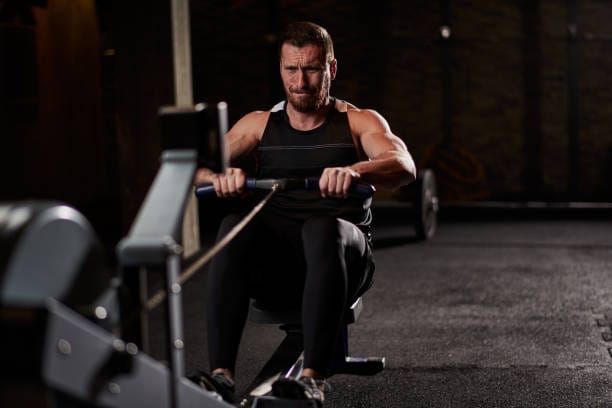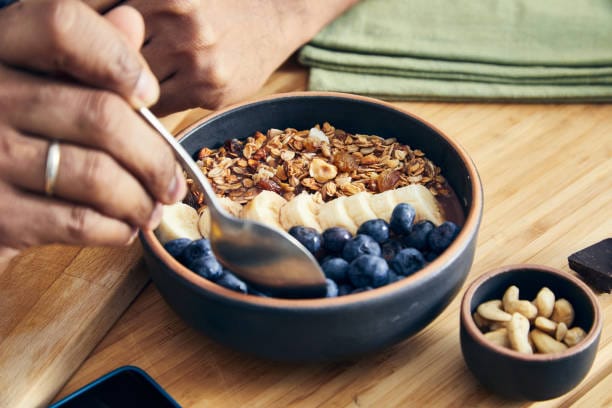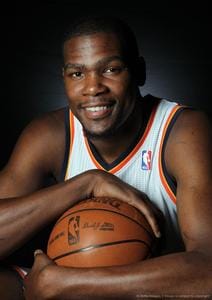- MOTIVSPRINT
- Posts
- The Norwegian 4x4: The 20-Minute Secret to a Younger, Stronger Heart
The Norwegian 4x4: The 20-Minute Secret to a Younger, Stronger Heart
EXERCISE 🏋️♂️

Imagine a workout so powerful that it not only makes you fitter but also makes your heart younger. And when I say younger, I mean biologically younger.
The best way to get this benefit is called the Norwegian 4x4 Protocol. It’s a simple workout used by athletes in Norway, one of the fittest countries in the world.
But you don't need to be a Norwegian athlete to do it. You just need to follow the simple steps.
The 4×4 Formula
The first "4" means you do four separate intervals.
The second "4" means each interval is four minutes long.
Here’s your game plan
Warm-up: 10 minutes of easy movement.
Interval 1: Go hard for 4 minutes.
Rest: Recover for 3 minutes (go slow and easy).
Repeat: Do steps 2 and 3, 3 more times (total of 4 intervals).
Cool-down: 5 minutes of easy movement.
That’s it! The whole workout is less than an hour, but the part that transforms your heart is just those 16 minutes of effort.
How Hard is “Hard”?
Getting the right intensity is the key to unlocking the heart benefits.
During the 4-minute PUSH - You should be working at a 7 or 8 out of 10. Your breathing is heavy. You can only say a word or two. Holding a full conversation is impossible. You're working hard, but you're not completely out of control.
During the 3-minute RECOVERY - Keep moving! This is an active rest. Slow way down to a 3 or 4 out of 10, where you can breathe easily and have a conversation again.
The Norwegian 4×4 Makes You Young At Heart
Hard, interval training does something for your heart that slow, steady exercise just can't match. As we get older, our arteries can get stiffer, making our hearts work harder to pump blood. This is a major sign of an "aging" heart.
When you push your heart rate up during those 4-minute intervals, it’s training your arteries to be more flexible and strong. A flexible artery is a young artery, and a strong heart doesn't have to work as hard.
Doctors and scientists have shown this in studies. This kind of intense interval training is one of the best ways to improve your heart's function and help reverse signs of its aging.
There Are Other Perks
While giving your heart a tune-up is the major benefit, you also get:
A Fitness Supercharge: It dramatically improves your stamina (your VO2 max) faster than almost any other workout.
After-Burn Effect: Your body burns extra calories for hours after you finish as it works to recover.
Mental Toughness: Conquering four hard efforts builds serious confidence.
Your Weekly Plan for a Healthier Heart
You don't need to do this every day. Your heart needs the challenge, but it also needs time to rebuild and get stronger.
Do the 4x4 workout once a week. That’s all you need to see big improvements.
On your other workout days, do easier, longer activities. For example, go for a 30-45 minute bike ride or jog where you can easily talk the whole time. This is called "base training," and it builds your fitness without wearing you out.
Take at least one full rest day each week where you do no exercise, or maybe just some light stretching.
You Can Do It Anywhere
You don’t need a gym. You can do the 4x4 protocol with almost any activity:
Running (outside or on a treadmill)
Cycling (outside or on a stationary bike)
Swimming
Rowing
Brisk walking on a steep hill
So, the next time you want a workout that’s short, effective, and can even help keep your heart young, give the Norwegian 4x4 a try. It’s a simple recipe for getting fitter, faster, and healthier from the inside out.
NUTRITION 🥑
When to Eat Carbs for Your Toughest Workouts

For active people who play sports like soccer, basketball, or do high-intensity interval training (HIIT), nutrition is a key part of performance. These activities require quick bursts of energy.
Carbohydrates are the body's main source of fuel for this type of effort. Knowing when to eat carbohydrates can help you perform better and recover faster.
Think of your body like a high-performance car. You wouldn't try to drive a race car on an empty tank. Carbs are your high-octane fuel. The timing when you eat them can be the difference between feeling great and hitting a wall.
1. Loading Up the Tank
About 2 to 4 hours before you train or compete, you need a solid meal. This is your main fuel stop. The goal is to top off the energy stores in your muscles, called glycogen.
What to do: Eat a balanced meal 2 to 4 hours before your session. This meal should be high in carbohydrates and include a moderate amount of protein.
Examples: A turkey sandwich on whole-wheat bread, a bowl of oatmeal with fruit, or pasta with a lean meat sauce.
Closer to Start Time (30-60 minutes before): A small, easily digestible carbohydrate snack can provide a final energy boost. A banana or an energy bar are good choices.
Starting your workout with full energy stores prevents early fatigue.
2. Keeping the Engine Running
For most workouts that are under an hour, you probably don’t need to eat anything. Your body has enough fuel from your pre-game meal.
But if you’re going hard for longer than 60-90 minutes, taking in carbohydrates during exercise can maintain energy levels and focus.
What to do: You don’t need a full meal! The key here is simple, fast-acting carbs that are easy to consume.
Examples: A sports drink, an energy gel, some gummy candies, or even a handful of raisins.
Timing: Try taking small sips of a sports drink throughout your activity, or have a small snack during a halftime break.
This is like stopping for a quick splash of gas to make sure you can finish the race strong.
3. Repairing and Refilling
This might be the most important part. After you’ve pushed your body to its limits, your muscle fuel tanks are close to empty. There’s a "golden hour" (roughly the first 60 minutes) right after your workout when your muscles are eager to soak up carbs and protein to start repairing.
If you miss this window, you might feel sore and tired for your next workout.
What to do: Try to eat a meal or a snack with both carbs and protein within that first hour after you finish.
Good examples: A chocolate milk, a fruit smoothie with yogurt, or a protein bar with some fruit.
The Follow-Up Meal: Within two hours, have a more balanced recovery meal like grilled chicken with rice and vegetables, or a quinoa bowl with beans.
This recovery meal isn't just about feeling better now. It’s about making sure you’re ready and fully fueled for your next workout.
Keep It Simple
All this talk about timing can seem complicated, but it doesn't have to be. Here’s the bottom line:
Before: Eat a good carb-based meal a few hours ahead of time.
During: For long sessions, use quick carbs like a sports drink.
After: Refuel with a carb+protein snack as soon as you reasonably can.
Listen to your body. If you feel slow and drained, you might not be eating enough carbs. If you feel heavy and sick to your stomach, you might be eating too much or too close to your workout.
Try these tips in your next training sessions. They will help ensure that your body has the energy it needs to perform at its best and recover efficiently.
BIOHACKING⚡
Feel Better Faster: The Power of the Hot-and-Cold Shower

You just finished a tough workout. Your muscles are sore, you’re tired, and you feel a little stiff. All you want is a nice, hot shower to relax. But what if the secret to feeling better faster wasn't just heat, but a mix of hot and cold?
It might sound a little crazy, but using hot and cold water alternately in the shower can be a game-changer for your recovery. It’s called a "contrast shower".
Why Would Anyone Choose to Be Uncomfortable?
The idea of turning that shower knob to cold on purpose isn’t most people's idea of fun. I know. I took cold showers for months. But contrast showers are like giving your muscles a workout after your workout. They wake your body up and help it heal.
The principle behind contrast therapy is straightforward. It uses temperature to manipulate blood flow, creating a natural pumping action in your circulatory system.
Under hot water, your blood vessels expand in a process called vasodilation. This widens the pathways for blood to deliver oxygen and nutrients to tired muscles, helping with the repair process.
Under cold water, your blood vessels constrict, or undergo vasoconstriction. This pushes blood, along with metabolic waste products like lactic acid, away from the muscles and back toward your body’s core.
By switching between hot and cold, you create a repeated cycle of flushing out waste and delivering fresh, nutrient-rich blood. This back-and-forth action can help reduce inflammation and ease muscle soreness quickly. It’s a natural way to speed up your body’s repair crew.
The Benefits: More Than Just Sore Muscles
This pumping action doesn’t just help with soreness. People who use contrast showers regularly report other benefits:
More Energy: That jolt of cold water wakes up your nervous system. It can make you feel more alert and energized than a cup of coffee, without the crash later.
Better Mood: Cold exposure has been shown to release endorphins, which are your body’s "feel-good" chemicals. You might start your day in a better mood after a contrast shower.
Stronger Immunity: Some studies suggest that regular cold exposure can give your immune system a boost, helping you fight off common colds.
Improved Circulation: All that opening and closing of your blood vessels is like a workout for your circulatory system, helping your blood flow better overall.
How to Take a Contrast Shower (Without Hating It)
You can easily incorporate this practice into your routine. Follow these steps:
Start Normal. Begin your shower with your usual warm or hot water. Let your body get warm and relaxed for about 2-3 minutes.
Make the Switch. Take a deep breath and turn the knob to cold. You don't need to go to the coldest setting right away. Just go as cold as you can comfortably handle. The goal is to feel a strong contrast, not to torture yourself.
The Timing. Stay under the cold water for a short time—just 30 to 60 seconds. That’s it! Focus on your breathing and try to relax instead of tensing up.
Back to Warm. Switch back to hot water for another 2-3 minutes. Let the warmth soak back into your muscles.
Repeat. Go through this cycle 3 to 4 times. You can do more if you’re feeling brave!
Always End on Cold. Try to finish your last cycle with the cold water. It leaves you feeling invigorated and awake.
A Quick Tip: You don’t have to put your whole body under the cold stream at first. Start by just moving your legs and arms through the water. As you get used to it, you can let it hit your back and chest.
Listen to Your Body
Contrast showers are safe for most people, but it’s always smart to listen to your body. If you have heart problems or high blood pressure, you should talk to your doctor before trying this, as the sudden temperature changes can be stressful on your circulatory system.
Don’t push yourself too hard on your first try. Even ending your regular shower with just 30 seconds of cold water is a great start. With consistency, you may find this practice to be a powerful and refreshing addition to your recovery routine.
CHALLENGE💪
Give Your Heart a Tune-Up!

Your Challenge: Try the Norwegian 4x4 Workout
Here’s your step-by-step challenge guide:
Pick Your Day: Look at your week and choose one day to be your challenge day. Mark it on your calendar!
Gear Up: Decide what you’re going to do. Running? Biking? Keep it simple.
Just Follow the Recipe:
Warm-up for 10 minutes (easy pace).
Go! Push hard for 4 minutes (a 7/10 effort).
Recover. Go slow for 4 minutes.
Repeat that hard-easy pattern three more times.
Cool-down for 5 minutes (easy pace).
In just under an hour, you will have done one of the most effective workouts for your overall fitness and for the long-term health of your heart. Now unlock your inner Norwegian athlete and give your heart a boost. Let's go!
QUOTE OF THE WEEK 💬
"Hard work beats talent when talent fails to work hard." — Kevin Durant

REWARDS 🥇
MERCH 👕

Spread the Word!
If you found this content informative, thought-provoking, entertaining, enjoyable, life-saving, or simply awesome, don’t be greedy! Share. It’s FREE!





Reply